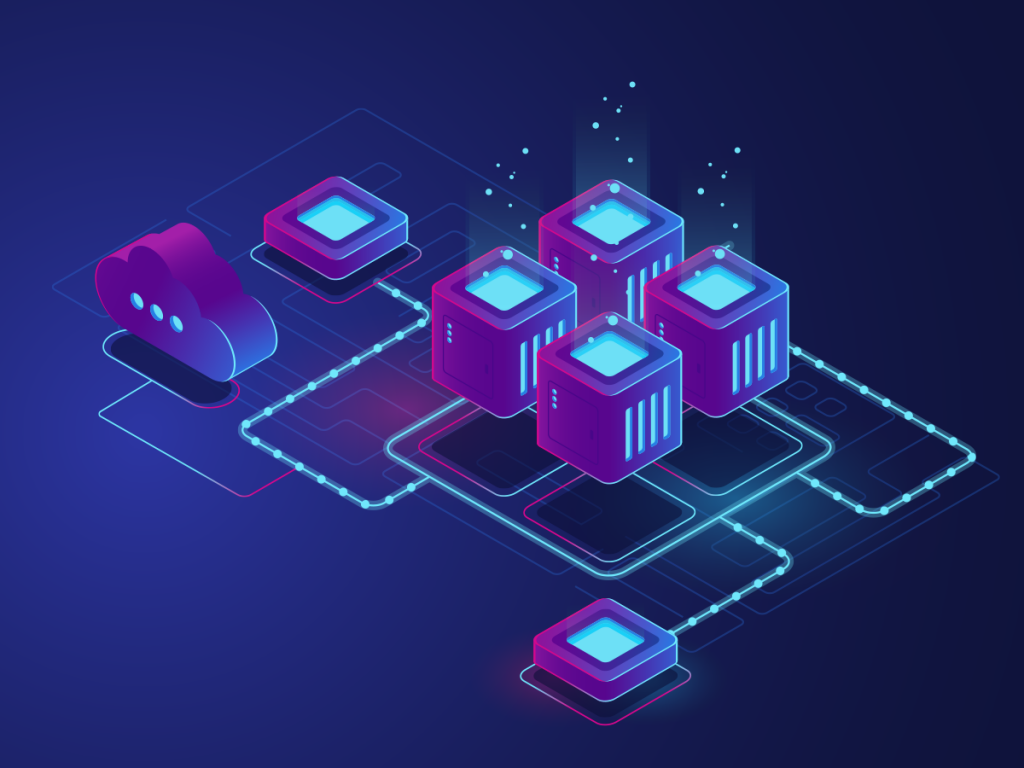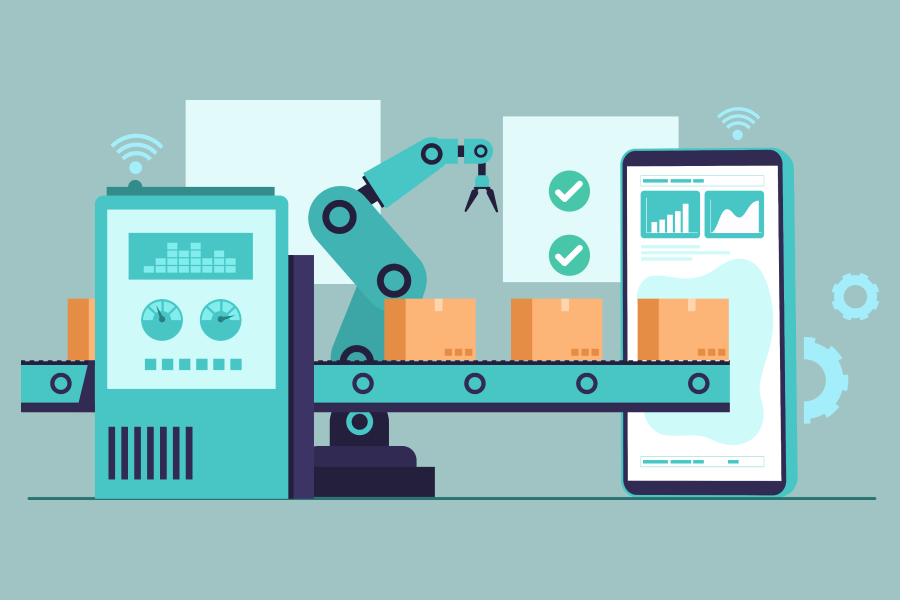A recent term in the IT industry that is also making an impact in the financial sector is Blockchain. But for many people, it’s just a hot topic of technological development which is of not much concern to them. But the capabilities that Blockchain Technology is showcasing often make it one of the most advanced technologies that would flourish across multiple industries by its promising potential. Several experts of the IT industry are often explaining Blockchain as the most advanced and innovative form of database that has a distributive nature in a computer network. Blockchain is also defined by IT industry leaders as a robust ledger that serves the purpose of recording transactions and maintaining track of assets of a business
Not just the intangible assets but the tangible assets like vehicles, land property, and liquid cash can be tracked through blockchain technology. The blockchain structure allows any information whether transactional or tracking-based to get delivered immediately across the network system along with a high level of transparency allowing the granted members to acknowledge it much quicker. This enhanced level of speed and accuracy across a network allows the organization to function more efficiently and transparency across the network helps in innovative insider security.
Blockchain Anatomy facts
The blockchain when looked at from a simpler perspective can be considered as a technologically advanced list of electronic records having a link between all of them through cryptography. The analysis and construction of protocols that keep communication across a network secure from malicious entities are known as cryptography. The records that blockchain technology holds across a network are free from any hidden manipulation, any slight changes would get recorded in real-time and available across the whole chain with recorded changes in every block. The blockchain when dedicatedly implemented as a ledger is generally managed through a peer-to-peer network.
The application architecture of peer-to-peer networking or computing helps in segregating tasks between peers. The other prime advantage of blockchain technology lies in the disruption of administrative authority. In the blockchain system, there is no hierarchy of control and all the network members exercise the transparency present constantly. The immutability that is present for all electronic records doesn’t let anyone get away with tampering. This also raises the question of how errors can be removed from an already recorded transaction- well in simple words it can only be done by adding a new transaction to rectify the error and both the transactions remain visible even after the error-free transaction gets recorded.
The spectacular system of Blocks
Every blockchain consists of multiple blocks which are interconnected through the technology of cryptographic hash. Every single blockchain consists of such a cryptographic hash of the previous block. This repetitive process confirms the intactness and authenticity of every block which is present in the chain. The cryptographic hash function can be stated as a mathematical algorithm that implements the mapping between a fixed size bit array and a size varying bit array. These functions are known as one-way functions because the computations are not much possible to be reversed. The oldest block from which the chain starts is called the genesis block and every block including this genesis block carries a digital signature for authentication. These blocks function by storing valid transactions that are cryptographically hashed and turned into a Merkle tree by means of encoding. This tree acts as a hierarchical structure for all the parent and child nodes.
In this Merkle tree, the parent node gets the label of CHF but only the data block kind. On the other hand, the inner node gets the cryptographic hash label from the succeeding child notes. The verification process of enormous size data structures becomes much easier due to the Merkle tree. In blockchain technology, it is also possible to produce separate blocks simultaneously to build a makeshift fork. In some situations, a blockchain fork is required to handle changes in protocol, block height matching, and disagreement between parties. There can also be situations where a block is not selected in the chain and it becomes an orphan block.
The peers imparting support to the database only keep the version that is the highest scoring. A peer adds or overwrites their database when they receive a version with a higher score. The enhancement gets retransmitted to the other peers in the network. Although in blockchain overwriting is not required and the new blocks get extended when the score of new blocks is added to old blocks with further incentives provided. Thus in blockchain technology, the chances of an entry being replaced are extremely low as more blocks are getting stacked over it.
The spectacular system of Blocks
Blockchain technology is also termed Distributed Ledger Technology(DLT) as the record ledger is shared throughout the network while eliminating the chances of duplication. This leads to the practical availability of history for all digital assets which remains transparent in access too. The assets maintained through blockchain technology are witnessing a higher level of trust due to its concrete integrity and block encryption
For modern assets, security remains among the top priorities and the vulnerability is tried to be drastically reduced. As this becomes achievable through blockchain more and more organizations are adopting blockchain technology for its revolutionary features. But to know blockchain on a deeper level first the working process needs to be understood briefly:
- Whenever a transaction gets processed, the data is segregated into chunks and recorded in the form of blocks. These transactions can be directly related to the tracking of an asset, which can be a physical product or a digital object. The data recording in the form of blocks can be priorly customized based on the requirement. Not every organization would have the same form of transactions and neither will the data vitality be the same. So the information requiring priority and need for intact recording will get stored.
- As transactions proceed the chain formation between the blocks begins and through the cryptographic hash each block remains connected only to the blocks preceding and succeeding it. The blocks are able to confirm the time and order of transactions including the other conventional details of location, identity, and quantity of assets. The blocks are so securely linked that it becomes impossible to remove or add a non-belonging block to the chain. This drastically reduces the risk of malware and fraudulent activities in the organization.
- In blockchain technology whenever a new block is getting created it also reverifies the previous block and enriches the authenticity of the existing blocks. As the blocks remain free from tamper, the entire history of the assets stays immutable and the value of assets doesn’t deteriorate over time. The blockchain system has its own regulations set known as the Smart Contract. These digital contracts get automatically executed when the conditions get satisfied. Different agreements are automated through this process excluding the involvement of an intermediate presence and processing a certain and transparent agreement. The workflow control can also be dominated by the blockchain including sensitive bond transfers.
- The members of the network are provided access by the use of cryptographic keys and each member holds two keys among which one is a public key and another one is private. Through the combination of these keys, valid identification is created which can neither be replicated nor manipulated. Before the data actually forms into blocks the data gets authenticated and authorized. For the addition of a new block into the public blockchain, most of the nodes in the network must agree with the validity of the transaction.
- At the last stage of blockchain formation, the “Proof of Work” stage is executed. The members of the network need to solve a complicated mathematical problem for completing the block to the network. The process of solving this problem is known as mining. This POW in other words is also called a consensus mechanism of decentralized rigidity. This proof of work step has extra importance in the cryptocurrency industry. Several miners are also required in some transactions because a high amount of energy is often required.

The spectacular system of Blocks
There are multiple kinds of blockchain networks in existence which are explained here below briefly:
- Private Blockchain Network : This type of network is a peer-to-peer network that is decentralized and is widely used by private organizations and even government facilities. In this type of blockchain network, a controlling authority exists but only for the participant’s access. The organization also monitors the participant’s activity including maintenance of a distributed ledger or executing of a consensus protocol. The structure of private networks allows the presence of greater trust and confidence among the members. The private blockchains can be hosted on-premises or even be placed with a strong firewall in the corporate arrangement.
- Public Blockchain Network : The blockchain networks which operate in the public structure is more open in terms of access and joining the network doesn’t require personalized security keys. The public blockchain networks are implemented in various enterprise-level projects while the benefits of blockchain remain intact. But as the public blockchain networks generally have a large-scale reach, the requirement of strong and significant computation power remains dominant. The transparency of the network is utmost in a public blockchain network and transactions don’t have any privacy. This feature is sometimes considered as a drawback and thus should be implemented after proper consideration.
- Consortium Blockchain Network : This can be stated as the most innovative kind of blockchain network in which multiple organizations can participate and work together in a conventional setup. These organizations pre-determine and provide access to selected members who will be able to access network data and submit transactions in the block structure. The maintenance of the blockchain responsibilities is also well-distributed among the organizations. When all participants of the network are required to have protected access and have shared responsibilities of the blockchain, the consortium blockchain is most suitable.
The spectacular system of Blocks
The modern blockchain which is having an Open structure still needs the members to provide access to view transactions. But they are made more user-friendly than private records and private key security is not implemented. The blockchain technology which was of open type didn’t require any kind of permission and this led to many prejudiced misconceptions around blockchain technology. There still remains ongoing debates in the database division and other IT industries whether data structures that group data into blocks with timestamps can be called Blockchain or not.
But these databases are also similar in concurrency control like blockchain. The technology of blockchain prevents concurrent modification by preventing two transactions to expend similar output in a blockchain. But some IT experts have suggested mainly improving the public and open blockchain networks by implementing a stronger security framework.
The prime examples of open and public blockchain networks are multiple cryptocurrencies like Bitcoin, Litecoin, and Ethereum. This has led to the Analysis of public blockchains being more necessary. The process of blockchain analysis involves not only the inspection and identification but also implements clustering and modeling. The aim of the blockchain analysis process is to find vital information regarding the various factors operating in cryptocurrency transactions.
The need for public blockchain analysis like Ethereum and bitcoin is conducted more often by private companies. Even after being an open platform for many cryptocurrencies, the users have found the process of access and transaction to be complicated. After some evident use of blockchain empowered cryptocurrencies in illegal activities the security aspects of blockchain technology are getting revised. Multiple sophisticated tech companies are also providing tracking services for blockchain. This lets organization like banks, crypto exchanges, and law enforcement agencies monitor and track crypto-assets transfers.

 Web and Full Stack
Web and Full Stack CMS and Frameworks
CMS and Frameworks Online Marketing
Online Marketing Cloud Services
Cloud Services ECommerce
ECommerce Mobile
Mobile



